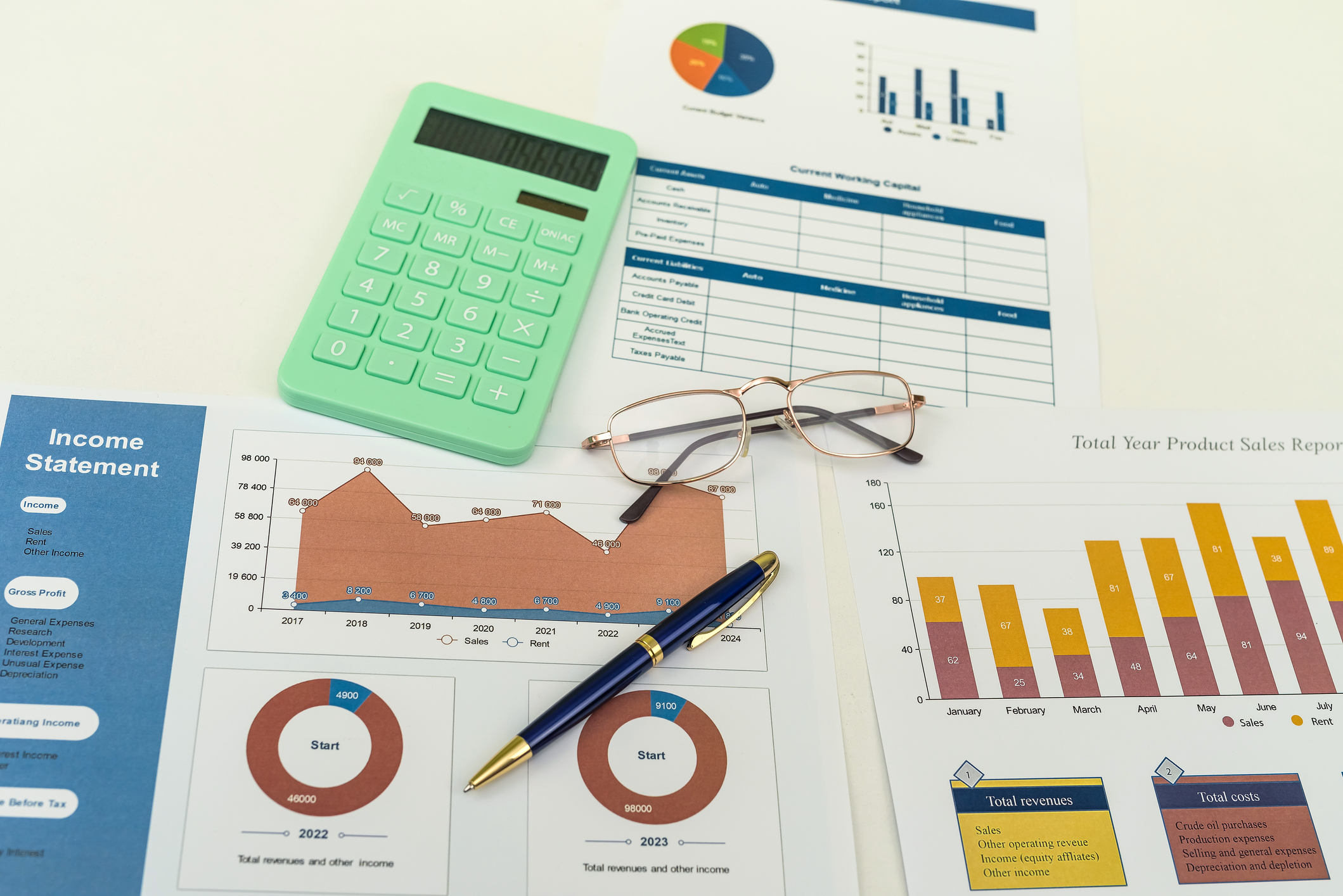Essential Financial Ratios Lenders Assess for Credit Worthiness
Financial ratios lenders review encompass four critical categories that determine your creditworthiness: liquidity ratios like current and quick ratios that measure short-term payment ability, leverage ratios including debt-to-equity and debt service coverage that assess financial risk, profitability ratios that demonstrate earning power, and coverage ratios that show your capacity to meet ongoing financial obligations.
After two decades as CEO of Complete Controller, I’ve witnessed countless qualified borrowers get denied simply because they didn’t understand what lenders were truly evaluating. The DSCR lending market has experienced explosive growth from a niche product to a mainstream financing tool, with originators like RCN Capital and A&D Mortgage producing billions in DSCR volume annually by 2023, compared to minimal market presence just a decade earlier. This article reveals the exact metrics that separate approval from rejection, giving you the roadmap to optimize your financial profile before applying for credit.

What are the financial ratios lenders review, and why do they matter?
- Financial ratios lenders review are quantitative measures derived from financial statements that assess liquidity, leverage, profitability, and debt coverage capacity
- Liquidity ratios evaluate your ability to meet short-term obligations using current assets like cash and receivables
- Leverage ratios measure your debt burden relative to assets or equity, indicating financial risk and stability
- Coverage ratios assess your capacity to service debt payments through operating cash flow and earnings
- Profitability ratios demonstrate your ability to generate consistent income and sustain long-term growth
The Foundation of Creditworthiness Assessment
Lenders operate within razor-thin margins and face strict regulatory requirements, making comprehensive risk assessment absolutely essential for their survival. Financial institutions cannot rely solely on credit scores or collateral—they must dive deep into the quantitative story your financial statements tell through ratio analysis.
This systematic approach transforms raw financial data into actionable insights about your business’s operational efficiency, financial stability, and repayment capacity. The credit analysis process combines both qualitative factors, like management experience and market conditions, with quantitative metrics that provide objective measurements of financial health.
The four pillars of financial ratio analysis
Credit analysts organize financial ratios into four distinct categories, each serving a specific purpose in the overall creditworthiness evaluation:
- Liquidity ratios focus on short-term financial health and your ability to convert assets into cash when needed
- Leverage ratios examine how much debt you’re carrying relative to your assets or equity, providing insight into long-term financial sustainability
- Coverage ratios measure your capacity to service existing debt obligations through operational cash flow
- Profitability ratios assess your ability to generate consistent returns and sustain business operations over time
Liquidity Ratios That Determine Short-Term Viability
Liquidity ratios serve as the first line of defense in credit analysis, measuring your business’s ability to meet immediate financial obligations without selling long-term assets. These ratios are particularly crucial for lenders because they indicate whether you can maintain operations during temporary cash flow disruptions or unexpected expenses.
The importance of liquidity extends beyond simple bill-paying capacity—it reflects your ability to take advantage of growth opportunities, weather economic downturns, and maintain supplier relationships. A strong liquidity position demonstrates financial discipline and reduces the risk of default during challenging periods.
Current ratio analysis and benchmarks
The current ratio represents the most fundamental liquidity measure, calculated by dividing current assets by current liabilities. This ratio reveals whether your business has sufficient short-term resources to cover obligations due within the next twelve months.
Lenders typically prefer seeing current ratios between 1.5 and 2.0, though acceptable ranges vary significantly by industry. A current ratio below 1.0 signals potential liquidity problems, as it indicates that current liabilities exceed current assets. However, ratios significantly above 3.0 may suggest inefficient capital allocation, as excess cash could be invested in growth opportunities rather than sitting idle.
Quick ratio for conservative assessment
The quick ratio provides a more stringent liquidity test by excluding inventory and prepaid expenses from current assets. This “acid test” ratio focuses exclusively on the most liquid assets—cash, marketable securities, and accounts receivable—that can be converted to cash within 90 days.
Quick ratios of 1.0 or higher indicate strong liquidity positioning, suggesting your business can meet short-term obligations without relying on inventory sales. Companies in service industries often show higher quick ratios since they carry minimal inventory, while manufacturing and retail businesses typically show lower ratios due to significant inventory investments.
Leverage Ratios That Reveal Financial Risk
Leverage ratios form the cornerstone of credit risk assessment, providing lenders with critical insights into how your business finances its operations and the sustainability of your capital structure. These metrics reveal the balance between debt and equity financing, helping lenders understand your financial flexibility and ability to weather economic challenges.
High leverage ratios indicate greater financial risk, as excessive debt obligations can strain cash flow and limit operational flexibility during difficult periods. The relationship between leverage and creditworthiness extends beyond simple debt levels to encompass debt servicing capacity and financial stability over time.
Debt-to-equity ratio standards
The debt-to-equity ratio measures the proportion of debt financing relative to equity investment in your business. This fundamental leverage metric helps lenders assess your financial risk profile and commitment to the business through equity investment.
Industry standards for acceptable debt-to-equity ratios vary considerably, but most lenders prefer ratios below 2.0 for traditional businesses. Technology and service companies often operate successfully with higher ratios due to lower asset requirements, while capital-intensive industries typically require more conservative leverage levels.
Debt service coverage ratio requirements
The debt service coverage ratio (DSCR) represents perhaps the most critical metric in commercial lending, measuring your ability to service debt payments through operating cash flow. In 2025, most lenders require a minimum DSCR of 1.25, meaning rental income must be at least 125% of debt obligations, though some aggressive lenders accept ratios as low as 0.95 for high-yield properties.
Real estate investor Sarah successfully qualified for a $200,000 DSCR loan in Tampa, Florida, by demonstrating strong cash flow metrics. Her property generated $2,000 monthly rent ($24,000 annually), with operating expenses of $9,600 (40% of gross income), resulting in a Net Operating Income of $14,400. With an annual debt service of $12,000, her DSCR is calculated to be 1.2 ($14,400 ÷ $12,000), meeting lender requirements and qualifying for financing without traditional income documentation.

Coverage Ratios That Measure Payment Capacity
Coverage ratios provide lenders with specific insights into your ability to meet ongoing financial obligations through operational performance. These metrics focus on the relationship between earnings and fixed charges, helping lenders assess whether your business generates sufficient cash flow to support additional debt service.
According to S&P Global Ratings, DSCR loans showed remarkably low delinquency rates of only 2% for loans 60 days past due as of early 2023, even as interest rates increased, demonstrating that borrowers focused on cash flow metrics tend to be financially disciplined.
Interest coverage analysis
The interest coverage ratio measures your ability to meet interest payment obligations through operating earnings. Calculated by dividing EBIT (earnings before interest and taxes) by interest expense, this ratio indicates how many times your earnings can cover required interest payments.
Lenders typically seek interest coverage ratios exceeding 1.5, though preferred levels vary based on industry characteristics and business stability. Strong interest coverage ratios provide confidence that your business can maintain interest payments even during periods of reduced profitability.
Fixed charge coverage considerations
Fixed charge coverage ratios expand beyond interest payments to include other fixed obligations like lease payments, principal amortization, and essential capital expenditures. This comprehensive approach provides lenders with a more complete picture of your fixed cost obligations and available cash flow after meeting all essential requirements.
This broader coverage measure becomes particularly relevant for businesses with significant lease obligations or equipment financing arrangements. Strong fixed charge coverage ratios indicate robust operational performance and sufficient cash generation to support additional borrowing.
Profitability Ratios That Demonstrate Earning Power
Profitability ratios provide essential insights into your business’s ability to generate consistent returns and sustain long-term operations. These metrics help lenders assess whether your business model produces sufficient earnings to support debt service while maintaining operational viability.
The relationship between profitability and creditworthiness extends beyond simple earnings levels to encompass consistency, sustainability, and growth potential. Profitable businesses are more likely to survive economic challenges and continue making debt payments even during difficult periods.
Profit margin benchmarks
Profit margins measure your business’s efficiency in converting revenue into profit, providing lenders with insights into operational effectiveness and pricing power. Net profit margins reveal the percentage of revenue that remains after all expenses, while gross profit margins focus on core operational efficiency before overhead costs.
Lenders evaluate profit margin trends over time to assess business trajectory and sustainability. The ability to maintain or improve profit margins during economic uncertainty particularly impresses lenders, as it demonstrates operational resilience and effective management.
Return on assets performance
Return on assets (ROA) measures how effectively your business utilizes its asset base to generate profits. This ratio provides lenders with insights into management efficiency and asset utilization, helping assess whether your business generates appropriate returns relative to its investment base.
ROA analysis becomes particularly important when evaluating asset-based lending opportunities or assessing collateral values. Consistent ROA performance over multiple periods provides additional confidence in management capabilities and business sustainability.
Strategic Approaches to Ratio Improvement
Improving your financial ratios requires a comprehensive strategy that addresses both short-term liquidity concerns and long-term financial health. The average credit score for DSCR loan borrowers is 732, though lenders can work with scores as low as 620. Borrowers above 720 typically qualify for interest rates as low as 7%, compared to 8-10% for those at minimum DSCR levels.
Liquidity enhancement strategies include accelerating receivables collection, optimizing inventory levels, and negotiating extended payment terms with suppliers. These operational improvements directly impact current and quick ratios while improving overall cash flow management.
Operational efficiency improvements
Operational efficiency directly impacts multiple financial ratios simultaneously, making it a powerful tool for comprehensive creditworthiness improvement. Revenue enhancement through pricing optimization, cost reduction through process improvements, and working capital management through inventory and receivables optimization all contribute to stronger financial metrics.
Focus areas include:
- Automation opportunities that reduce costs
- Pricing strategies that improve margins
- Process improvements that accelerate cash conversion cycles
- Systematic implementation of best practices across operations
Conclusion
Understanding the financial ratios lenders review provides a clear roadmap for improving your creditworthiness and securing favorable lending terms. The four categories—liquidity, leverage, coverage, and profitability ratios—work together to paint a comprehensive picture of your business’s financial health and repayment capacity.
As I’ve learned through decades of helping businesses navigate the lending landscape, success comes from understanding not just what ratios to track, but how to improve them systematically over time. When you’re ready to optimize your financial ratios and position your business for lending success, visit Complete Controller to discover how our expert team can help transform your financial profile and accelerate your growth objectives.

Frequently Asked Questions About Financial Ratios: Lenders Review
What are the most important financial ratios lenders look at?
Lenders prioritize debt service coverage ratio (DSCR), current ratio, debt-to-equity ratio, and interest coverage ratio as the most critical metrics for credit decisions.
What is a good debt service coverage ratio for loan approval?
Most lenders require a minimum DSCR of 1.25, meaning your cash flow should exceed debt payments by at least 25 percent to provide adequate payment security.
How can I improve my current ratio quickly?
Accelerate accounts receivable collection, reduce short-term debt payments, delay non-essential capital purchases, and optimize inventory levels to improve current ratio rapidly.
What debt-to-equity ratio do lenders prefer?
Most lenders prefer debt-to-equity ratios below 2.0 for traditional businesses, though technology and service companies may operate successfully with higher ratios.
How does profit margin affect loan approval?
Consistent profit margins demonstrate business stability and management competence, with improving margins suggesting effective cost management that impresses lenders.
Sources
- Baseline Software. (2025, June 3). “A Brief History of DSCR Loans.” https://www.baselinesoftware.com/resources/a-brief-history-of-dscr-loans
- Complete Controller. “Ensure Ideal Liquidity Position.” https://www.completecontroller.com/ensure-ideal-liquidity-position/
- Complete Controller. “5 Reasons Why Borrowing Money is Better Than Giving Up the Equity.” https://www.completecontroller.com/5-reasons-why-borrowing-money-is-better-than-giving-up-the-equity/
- Complete Controller. “Net Profit Margin Business Essential.” https://www.completecontroller.com/net-profit-margin-business-essential/
- Griffin Funding. (2025, June 27). “DSCR Loans: What it is, Expert Advice & How to Apply (2025).” https://griffinfunding.com/non-qm-mortgages/debt-service-coverage-ratio-investor-loans/
- Investopedia. “Current Ratio.” https://www.investopedia.com/terms/c/currentratio.asp
- LendingGig. (2024, December 18). “Why DSCR Lending is a Game-Changer for Real Estate Investor.” https://lendinggig.com/blog/why-dscr-lending-is-a-game-changer-for-real-estate-investor
- Longleaf Lending. (2025, March 26). “DSCR Loan Approval Rates: What Lenders Are Looking For in 2025.” https://longleaflending.com/DSCR-loan-approval-rates-2025
- Wikipedia. “Debt Service Coverage Ratio.” https://en.wikipedia.org/wiki/Debtservicecoverage_ratio
- Wikipedia. “Return on Assets.” https://en.wikipedia.org/wiki/Return
 About Complete Controller® – America’s Bookkeeping Experts Complete Controller is the Nation’s Leader in virtual bookkeeping, providing service to businesses and households alike. Utilizing Complete Controller’s technology, clients gain access to a cloud platform where their QuickBooks™️ file, critical financial documents, and back-office tools are hosted in an efficient SSO environment. Complete Controller’s team of certified US-based accounting professionals provide bookkeeping, record storage, performance reporting, and controller services including training, cash-flow management, budgeting and forecasting, process and controls advisement, and bill-pay. With flat-rate service plans, Complete Controller is the most cost-effective expert accounting solution for business, family-office, trusts, and households of any size or complexity.
About Complete Controller® – America’s Bookkeeping Experts Complete Controller is the Nation’s Leader in virtual bookkeeping, providing service to businesses and households alike. Utilizing Complete Controller’s technology, clients gain access to a cloud platform where their QuickBooks™️ file, critical financial documents, and back-office tools are hosted in an efficient SSO environment. Complete Controller’s team of certified US-based accounting professionals provide bookkeeping, record storage, performance reporting, and controller services including training, cash-flow management, budgeting and forecasting, process and controls advisement, and bill-pay. With flat-rate service plans, Complete Controller is the most cost-effective expert accounting solution for business, family-office, trusts, and households of any size or complexity.
 Reviewed By:
Reviewed By:




